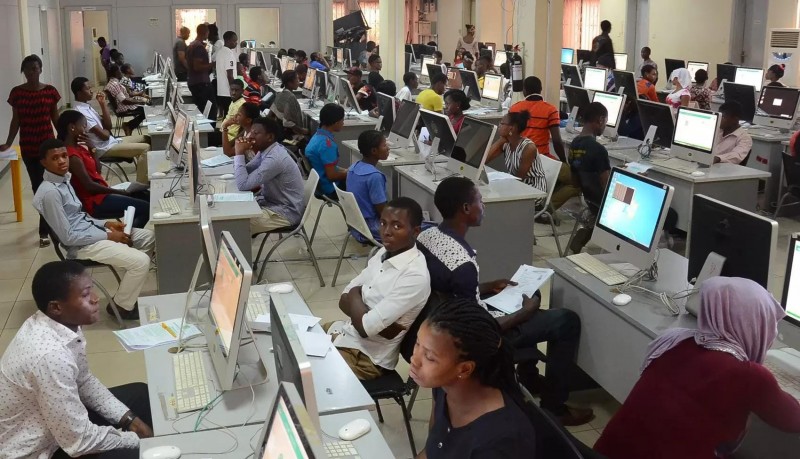What Happens When Bitcoin and AI Stop Talking Past Each Other? Bitcoin for AI 2025
How can Bitcoin’s programmable payments and AI’s autonomous agents work together to shape the future of finance and infrastructure? Santos Hernandez, founder of Bitcoin for AI 2025, explains what happens when two powerful technologies stop evolving in isolation.
We’re at a moment where the world is waking up to the tension between what’s centralized and what’s not.
On one side: , whose power is largely held by a few, built on models that keep growing in size and opacity. On the other: , built on principles of openness, verifiability, and individual control. Both fields attract their own passionate communities, but they don’t talk to each other nearly as much as they should — and maybe that’s been a missed opportunity all along.
noticed that gap. He’s the VP of Business Intelligence at ZBD and the force behind , a new virtual conference happening . The goal? To bring together builders from both worlds — . How do you actually wire Bitcoin into agentic systems? Can AI optimize Bitcoin mining and routing? What might it mean for two technologies with wildly different assumptions to share a roadmap?
What stood out in our conversation with Santos is that this isn’t about riding hype. It’s about creating a space that didn’t exist — one where developers, researchers, and product people can stop working in silos and start building things that take both tools seriously.
Bitcoin, after all, isn’t just “money.” It’s a payment network that settles instantly, without intermediaries — something AI agents will eventually need. At the same time, AI isn’t just large language models or voice assistants. It’s increasingly a coordination layer for decision-making and resource management — which could radically impact how Bitcoin functions under the hood.
: the push-and-pull between decentralization and speed, transparency and scale, sovereignty and usability.
That tension is what Bitcoin for AI is built to explore — not with panels or passive slide decks, but through live workshops and chance conversations. Because the people who’ll shape this intersection are likely the ones still figuring it out.
, why this moment feels different, and what it might mean to build something new where Bitcoin and AI finally meet in practice — not just in theory.
The fundamental tension is that we have two revolutionary technologies evolving in parallel without sufficient cross-pollination. Bitcoin offers superior monetary and payment properties — instant settlement, global reach, low costs, no chargebacks — that make it perfectly suited for AI systems. Meanwhile, AI is becoming increasingly pervasive but lacks native payment infrastructure for autonomous agents and machine-to-machine commerce.
Yet most AI development proceeds without considering Bitcoin’s payment capabilities, while most Bitcoin development isn’t leveraging AI for operational efficiency. This disconnect represents a massive missed opportunity.
There’s also a deeper economic dynamic at play. AI is driving productivity gains that push the cost of producing goods and services toward zero. But what happens when robotics can extract previously scarce resources — like gold or other commodities — much more cheaply, dramatically increasing supply while traditional currencies face mounting inflationary pressure?
Bitcoin stands alone as the only asset with a predictable, algorithmically-adjusted supply curve that responds to real-world factors like energy costs and hash production. As AI trends toward making production costs approach zero, Bitcoin’s scarcity becomes even more valuable. This creates a fascinating economic dynamic — and tremendous innovation opportunities at the intersection of these technologies in terms of both product development and user experiences.
What was missing was the practical conversation about implementation. Everyone discusses AI and Bitcoin separately, but no one was creating space to explore concrete applications — how do you actually build payment infrastructure for AI agents? How do you use AI to optimize Lightning Network routing? How do you solve energy coordination between AI compute and Bitcoin mining?
I kept encountering theoretical discussions but found few practitioners sharing real-world experience. During my time at American Express, bank integrations took years to complete — with Lightning, you have a standard protocol to move value between institutions instantly. Yet this transformative insight wasn’t being shared across communities. We desperately needed a forum for builders to exchange practical learnings, not just conceptual frameworks.
Beyond the operational gaps, I saw tremendous potential for unique product experiences that leverage both technologies in complementary ways. The synergies are natural — Bitcoin provides the payment rails that AI agents need, while AI can optimize Bitcoin operations in ways humans simply can’t match at scale. But without a dedicated space for cross-community collaboration, these innovations were happening in isolation, if at all.
Bitcoin culture emphasizes privacy, decentralization, self-custody, and sound money principles — values that could dramatically improve AI development. The AI community is largely building on centralized infrastructure without considering the sovereignty implications. could help address AI’s growing centralization concerns and for users to verify the results generative AI produces.
Conversely, the AI community’s focus on efficiency and automation could revolutionize Bitcoin operations. We’re seeing this with Jesse Shrader at Amboss using reinforcement learning to optimize Lightning payment routing, reducing the need for capital-intensive probing.
about centralization versus practical implementation speed. AI developers want to move fast and leverage existing infrastructure; Bitcoin developers prioritize decentralization and self-sovereignty, sometimes at the expense of user experience. Finding the balance between these approaches is where the real innovation happens.
Absolutely. Bitcoin provides the missing financial infrastructure for decentralized AI systems. Projects like L402 enable payments-as-credentials for AI services, while protocols like Nostr Wallet Connect allow controlled AI access to Lightning wallets.
The key insight is that Bitcoin isn’t just money — it’s superior payments technology. For AI agents to operate independently, they need programmable, instant payments without chargebacks or intermediaries. Bitcoin’s network effects and established infrastructure make it the natural choice for this.
We’re also seeing emergence of the Model Context Protocol (MCP) as a standard for AI tooling. Combining MCP with Bitcoin payments creates powerful possibilities for autonomous agents that can transact directly with each other, reducing dependence on centralized payment processors and AI service providers.
From a data perspective, I’m tracking several key signals: Lightning Network adoption for micropayments, the growth of L402 implementations, and increasing AI automation in Bitcoin operations.
The talent migration is another strong indicator. We have former Lightning Labs engineers building agentic payment infrastructure, Apple AI/Privacy engineers creating Bitcoin-aligned AI tools, and established Bitcoin companies hiring AI operations leads. This isn’t speculative investment — it’s operational necessity.
Energy coordination between AI compute and Bitcoin mining is also becoming reality, not theory. When Meta invests in nuclear energy for AI, the obvious question becomes: what happens during off-peak AI usage? Bitcoin mining provides the perfect energy sink, creating natural economic incentives for renewable energy development.
Critical. The most valuable insights happen in those spontaneous conversations between sessions. Gather Town recreates that conference experience virtually — you can walk up to speakers, overhear interesting discussions, and form impromptu connections.
Traditional virtual conferences lose the serendipity of physical events. But innovation at intersections requires cross-pollination between communities with different vocabularies and mental models. You need those casual interactions where a Bitcoin developer explains Lightning routing to an AI engineer, or where a data scientist realizes their model could optimize mining operations.
when these technologies converge. The unstructured conversations often yield the most breakthrough insights.
I’m hoping to see the emergence of truly autonomous economic agents — AI systems that can hold Bitcoin, make decisions about payments, and engage in commerce without human intervention. The infrastructure is nearly ready: we have Lightning for payments, MCP for AI tooling, and protocols like L402 for access control.
What excites me most is the potential for new business models we haven’t imagined yet. When AI agents can pay for data access, compute resources, and other services autonomously, it creates entirely new market dynamics. We might see AI systems that improve themselves by purchasing training data, or agents that coordinate energy usage between mining and compute automatically.
The unexpected outcome I’m most curious about is whether this convergence will accelerate both Bitcoin adoption and AI decentralization simultaneously. If AI agents naturally choose Bitcoin for payments due to its superior properties, it could drive mainstream Bitcoin adoption faster than any other use case we’ve seen. That would be a profound validation of Bitcoin’s role as the internet’s native money.











